My shoulders hurt. Are my bars too wide?
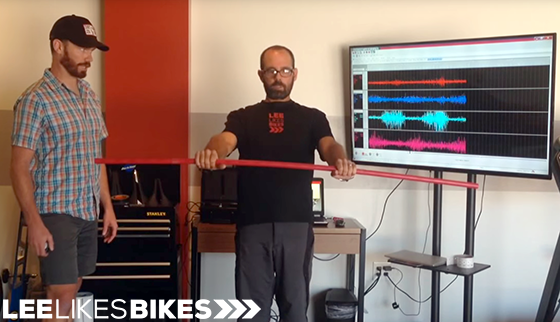
Whoa. Mind blown.
Today I learned some important things about shoulder stability — and maybe handlebar width as it relates to shoulder pain.
Story and video:
First the video:
And now some context:
When we ride (and Live), we want to keep our shoulder blades packed on our backs and our upper arms externally rotated and locked into the joints. This is the strongest, safest and most studly-looking position. Be like this:
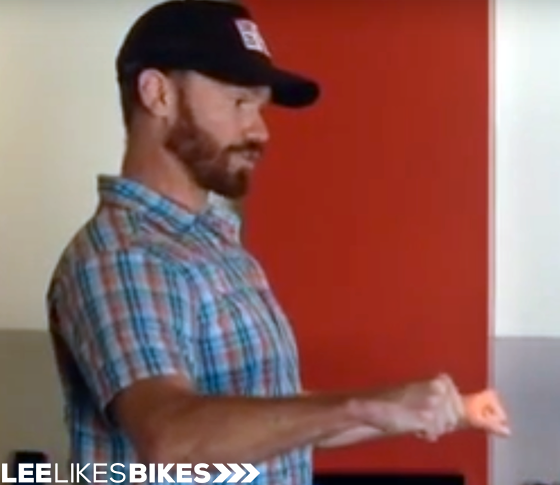
Dane DeLozier from REVO Physiotherapy and Sports Performance shows a strong, studly, externally rotated shoulder position.
Most real people have the opposite pattern. We tend to ride (and Live) with our shoulders shrugged forward and our upper arms internally rotated. This is weak, dangerous and does not look studly. Don’t be like this:

Dane shows a weak, meek, internally rotated shoulder position.
Because of my shoulder injuries and resulting bad movement patterns, the muscles that keep my shoulder blades packed on my back and upper arms locked in their sockets are very weak. The right side isn’t great. The left is so bad it will eventually get replaced with an artificial one. Artificial shoulders are not built for shredding, so I need to keep this one as long as possible.
I’ve gotten a lot stronger over the past year, but lately riding has become extremely painful. When I’m tired or the terrain is crazy, my left shoulder shrugs forward and I lose control of my upper arm. Strength disappears — and it hurts like hell!
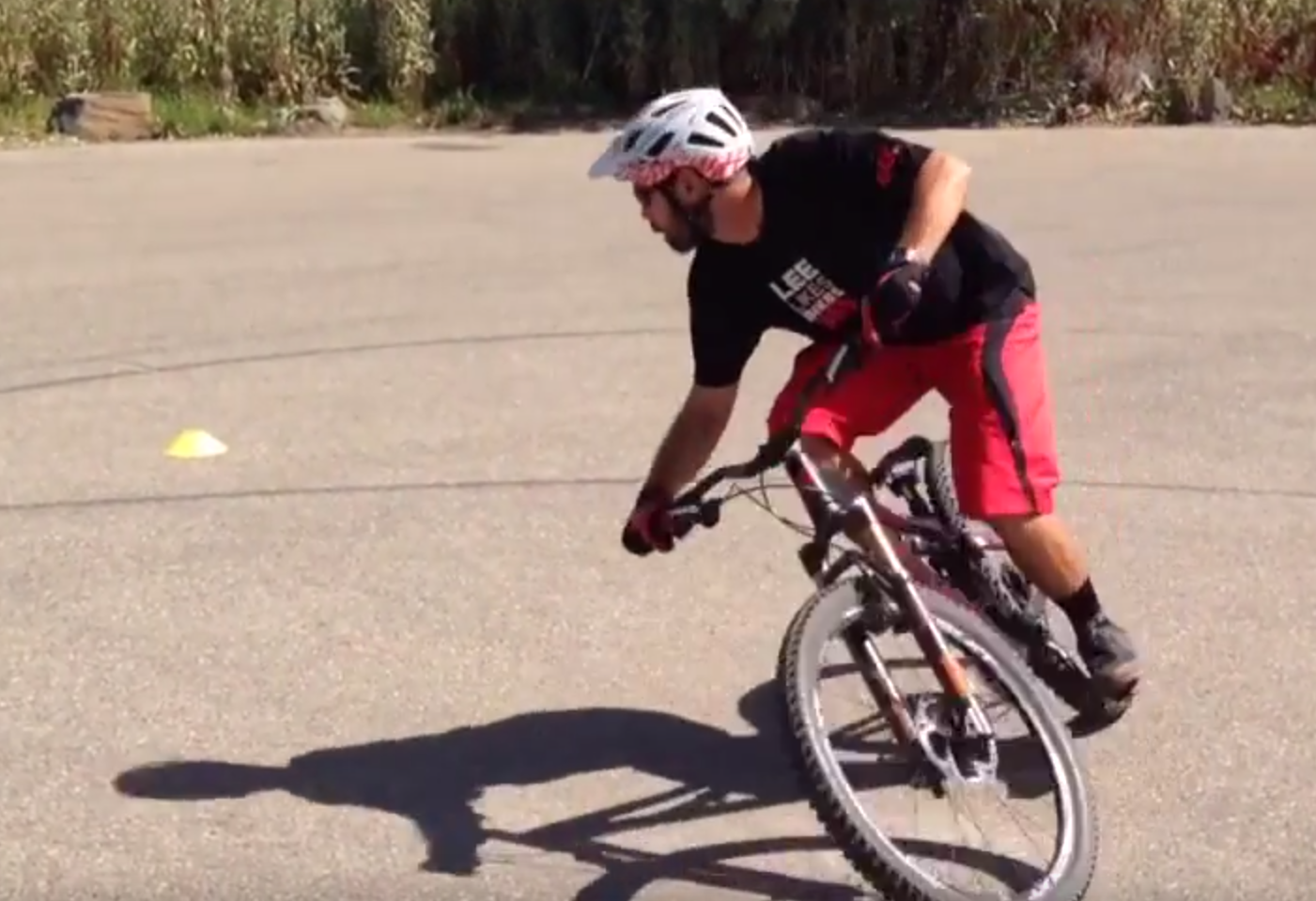
ARRGG! There it is! Even doing a cornering drill on pavement, my left shoulder is creeping upward. Not cool.
Working with the guys at REVO Physiotherapy and Sports Performance, I have two goals:
1) Strengthen the weak stabilizing muscles so I can keep my shoulders in a better position. This is the only way I can ride strong, live with less pain and delay shoulder replacement. This is an ongoing project.
2) Change the way I ride so it’s more fun and less painful. I try to keep my shoulders packed whenever I’m on the bike, but I eventually get tired, and some moves like steep roll-ins require more range than I can provide correctly.
Luckily, I’m blessed with a team of smart people to help me manage this stuff. Today Dane DeLozier at REVO did some soft-tissue work to loosen up the left shoulder, then he schooled me.
As Dane explains, the farther your elbows are from your torso, the more your shoulders tend to shrug upward and internally rotate. Also, the wider your elbows, the more torque is being driven into to your shoulder when you ride rough terrain. This can be bad for everyone, and it’s really bad for me.
This made me wonder, would I be better off with a narrower handlebar? My current handlebars are 29-32 inches (725 to 800 mm) wide. This is a lot wider than my hands like to be when I’m doing strength work off the bike. Would a narrower bar (and correspondingly narrower elbows) help me maintain a stronger shoulder position? And it will it let me handle more violence with my arms rather than my shoulders?
When you’re at REVO, you don’t have to guess. Dane put EMG sensors on two sets of muscles:
Upper trapezius. This hunches your shoulders upward and is part of my issue. Active upper trap = bad.
Infraspinatus. This rotates your upper arm externally while pulling it away from the bone at the top of your shoulder joint. Active infra = good. My infraspinatus is pretty much off duty.
Dane gave me a long plastic bar, which I pushed and pulled kind of like a handlebar on a fun trail. We started with a very narrow hand position then gradually got wider. As soon as Dane saw my upper trap spike, I stopped, and he measured the width of my hands. Most of the measurements were …
… 25 inches!
Whenever my elbows got wider than 25 inches, my left shoulder automatically hunched upward. This hunching has been torturing me on rough trails, and I can’t ignore it any more.

See the two light blue spikes? My left upper trap hunched when I pushed at this grip width.
So: I’m going to start experimenting with narrower handlebars. If I can shred with less pain, that’ll be sweet!
As for the rest of you: Don’t run 800mm bars just because they’re fashionable. Thing about what your body is doing, and feel free to make changes.
Stay tuned as I learn more.
Lee
Injury prevention, injury treatment and high performance done right: REVO Physiotherapy and Sports Performance
Know more. Have more fun!
Join the leelikesbikes mailing list:

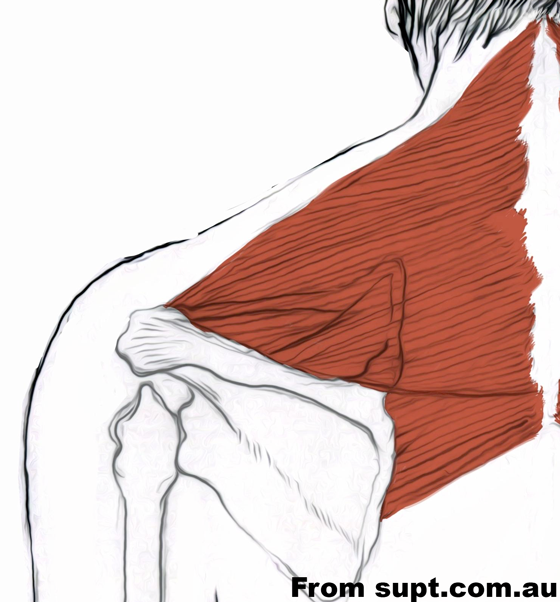
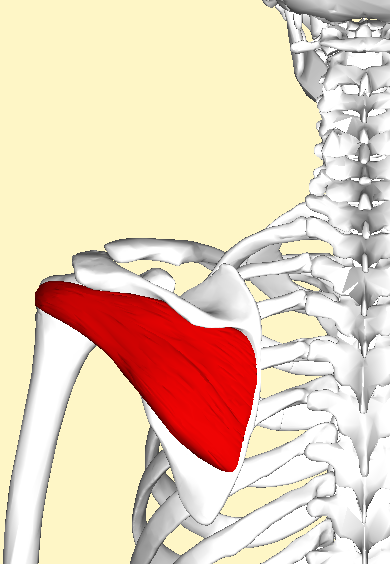
Leave a Reply
Want to join the discussion?Feel free to contribute!